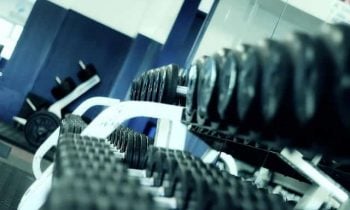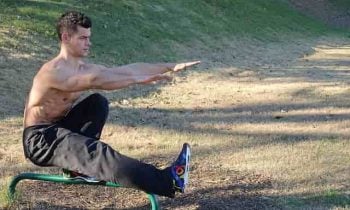It’s safe to say that all bodies are made differently. So maybe, despite hearing how great cardio is for you, you’re reluctant to give it a chance. You just feel your body isn’t built like it used to be, and you worry that cardio might upset your joints, trigger an old injury site, or just be plain impossible due to arthritis or a stiff back.
But there is actually a form of cardio that is perfect for people who aren’t very mobile. Low-impact cardio describes a wide variety of exercises that get your heart rate up, promote stronger circulation, better breathing, and better endurance, but without jumping, jerking, or jarring movements that may be difficult, painful, or impossible for people with physical ailments. The following workouts are great for people over the age of fifty who want to do a bit of cardio without stressing their bodies in all the wrong ways.
No-impact boxing and martial arts are great ways of getting in some cardio without putting too much weight through your joints. Normally when performing a combat sport you might have to hit a punching bag, pads, or indeed a rival. This is great for getting your heart rate up, but puts a lot of sudden pressure through your hands, wrists, elbows, neck, knees, hips, feet, and back. With no-impact combat sports you go through the exact same motions, but you don’t land on anything, instead stopping yourself at the point where you would make impact. This allows you to get all the cardio benefits whilst forgiving your joints.
If you find that jogging is too harsh on your joints, consider step exercises. Unlike jogging, stepping is like walking in that you always have one foot on the ground and that you can gently lean into the step, rather than fall onto your foot. Standard jogging is highly stressful to your knees and feet, whereas stepping is much gentler. Stepping also increases your heart rate faster than walking usually does. You can invest in a stepping machine or elliptical, march up and down the stairs at home, or step on and off a stepping stool. The elliptical and the stepping machine, however, have the distinct advantage that your feet never leave the pedals, taking a lot of weight off your limbs as you never lean into one limb fully at any one time. Stepping is a very versatile activity.
Cycling is another great alternative for otherwise healthy people whose joints are not up to the challenge of impact cardio. Much like stepping, cycling raises your heart rate more than a walk. But not only is it low-impact, your feet remain on the pedals at all times, allowing you to move your weight gradually into each foot. You may want to get a bicycle, or you may prefer a stationary bike at your local gym, or one to keep in your living room, but either way, it’s a great swap for the treadmill.
Swimming is another great option, as the water bears most of the weight of your body. As you are almost entirely supported, your joints and bones are given a break, making this an ideal cardio exercise for people who are overweight, who suffer joint problems, who have weak bones, or who have recently been injured. The water also slows your movements down, limiting tension through your muscles. Anything from a few laps at the pool to water aerobics can get your heart rate going, as long as you are moving fast enough.
Rowing is a great cardio workout with minimal pressure put on your joints. There are many different ways to practice rowing. Maybe you have the opportunity to row a real boat, but this isn’t realistic for many people. Most likely, you will use gym equipment to row. One form of rowing is to use a rowing machine. This simulates rowing a boat and you can increase or decrease the weight you are pulling against. An advantage to this one is that you are sat down, which reduces pressure on the legs. Another way of rowing is to use a barbell and do bent over rows. This can sometimes be a bit much for beginners, but it’s easy. Finally, you can use a resistance band. Step on it, or sit down and hook it across the arch of your feet, and row back, pulling on both ends of the band.
All of these are great low-impact cardio solutions for people over the age of fifty who may have joint or mobility problems. What is your go-to cardio solution?


 GYM workout
GYM workout Caloric Intake for Over 50s
Caloric Intake for Over 50s Vitamin D for Over 50
Vitamin D for Over 50 Magnesium for Over 50
Magnesium for Over 50 Bodyweight exercises
Bodyweight exercises